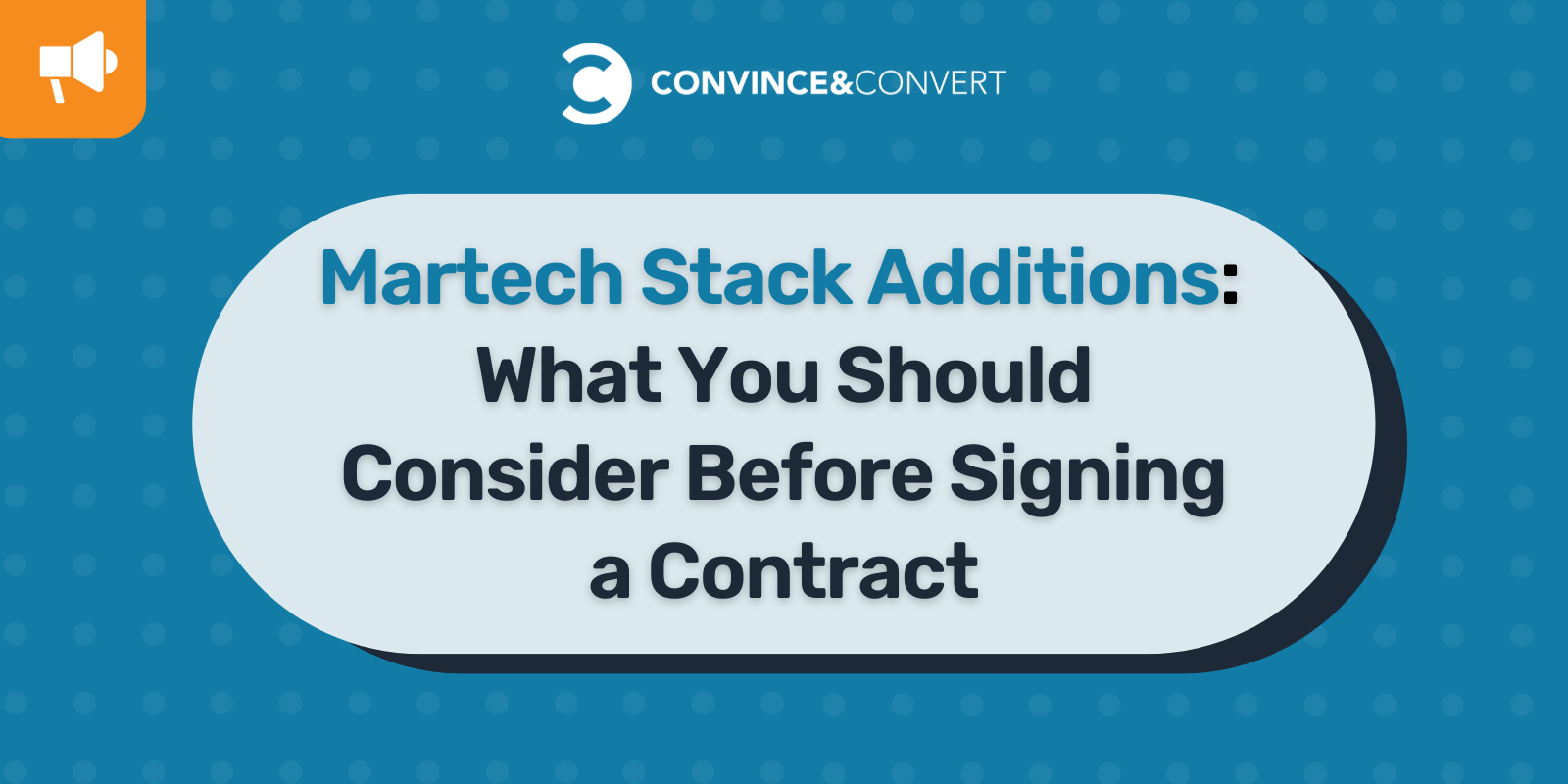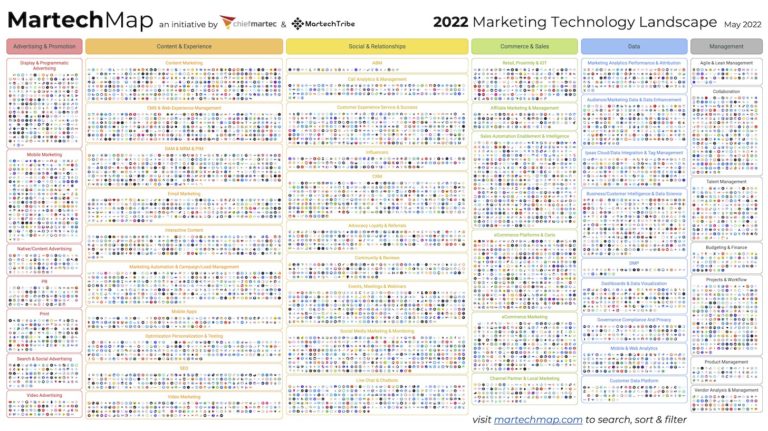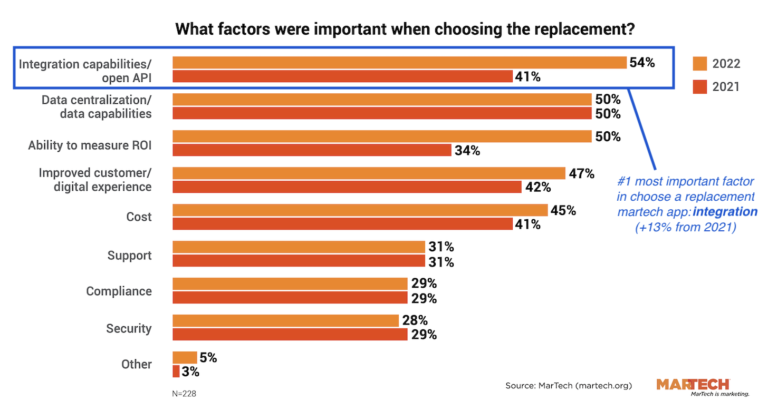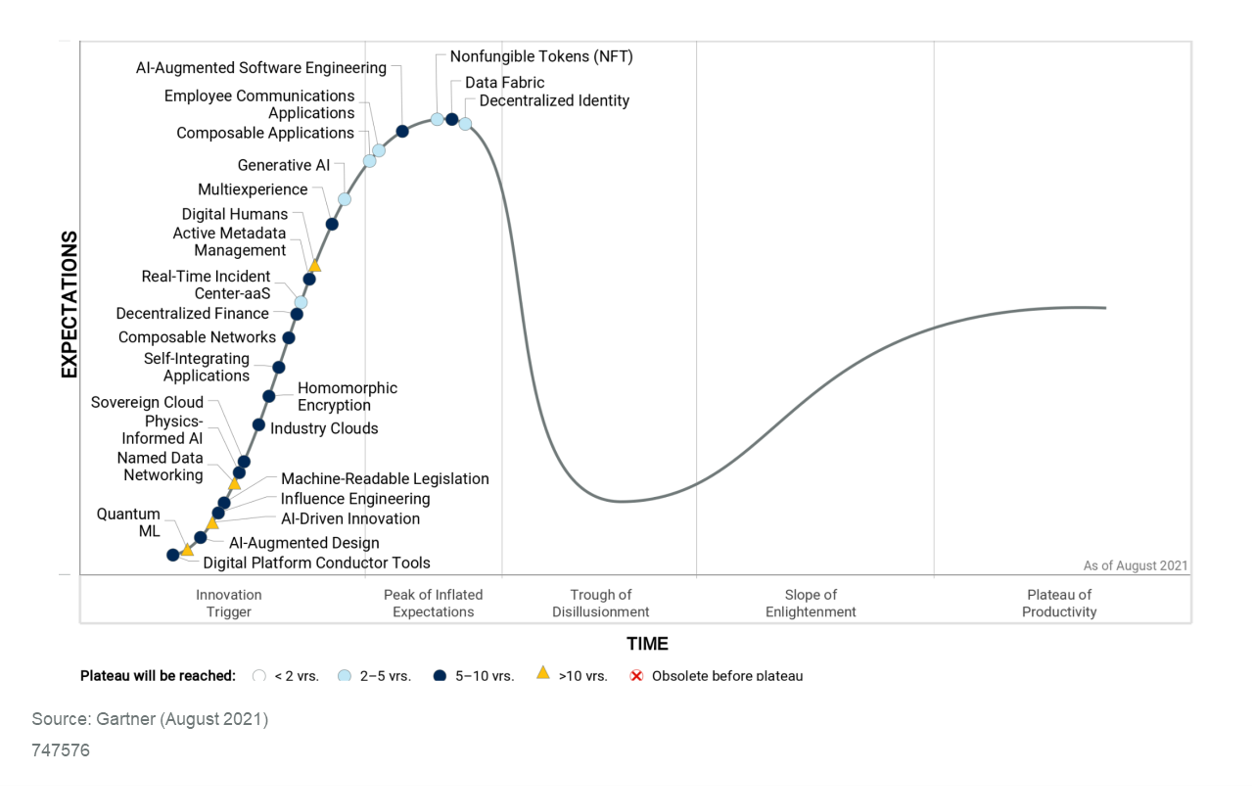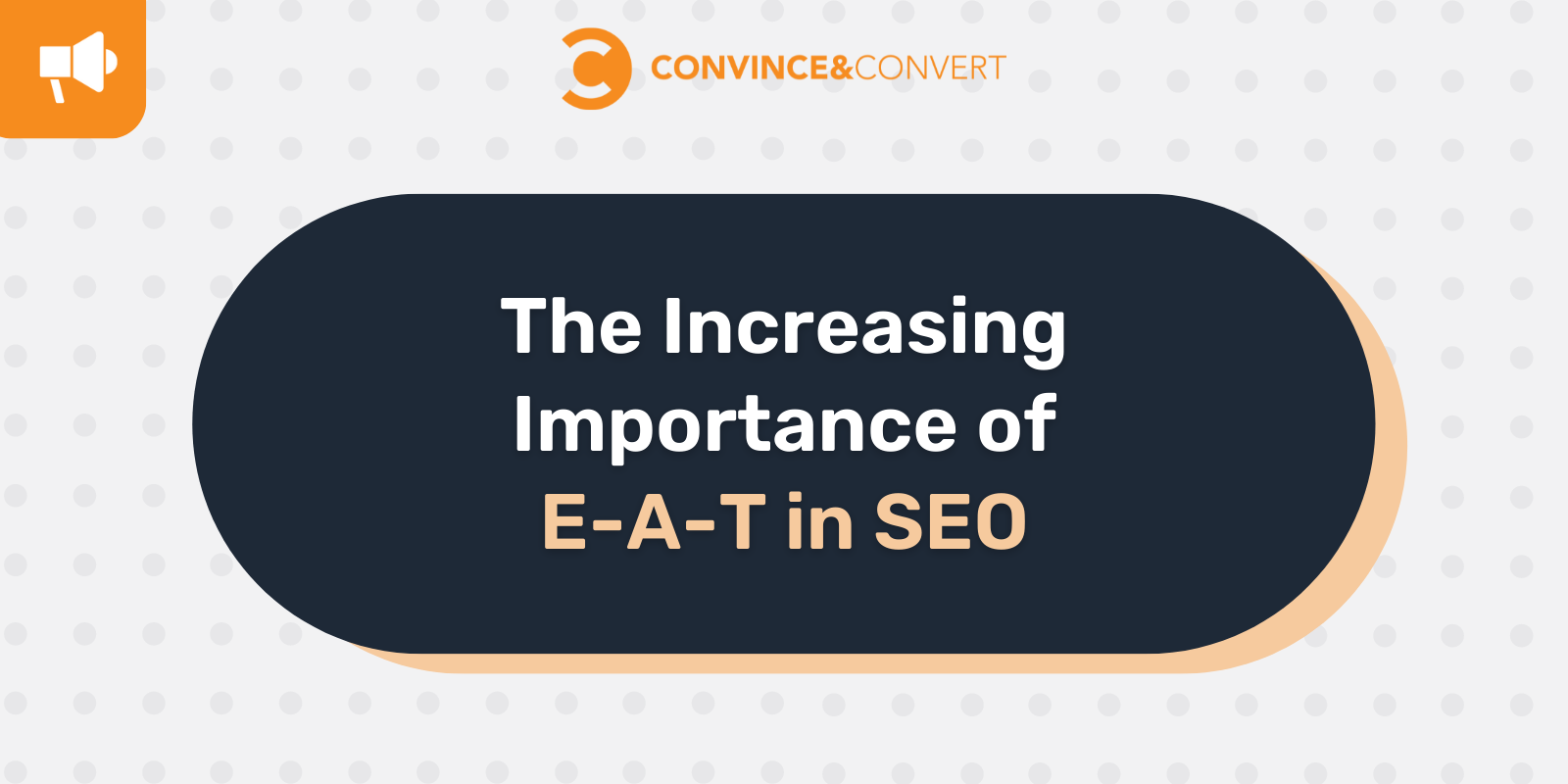
Simply put: if you’re optimizing your site for Google’s current algorithm, you’re already falling behind.
Over the past few years, Google has made several algorithm updates that show us directionally where they want organic search to be in the future and which types of content and websites they believe to be the ideal destination for users. Many of these updates can be attributed to E-A-T principles and sites that have been doing this well are getting rewarded more and more with each passing update.
Sites that are working on optimizing by focusing on older SEO tactics may see success in the near term but failing to look into the future of organic search means that those sites may be susceptible to being negatively impacted by Google’s inevitable and constant algorithm updates.
And it’s clear the future of SEO lies within E-A-T.
But first…
What Is E-A-T?
E-A-T is an SEO acronym that stands for Expertise, Authoritativeness, and Trustworthiness. It first appeared in Google’s Quality Rater Guidelines, a document provided to individuals who assess the quality of Google’s search results on their behalf.
- Expertise – focuses on the creator or author of the content and their skill/knowledge level
- Authoritativeness – reflects on the creator or author, the content itself, and the site as a whole
- Trustworthiness – centers on the creator or author, the content itself, and the site as a whole
In fact, E-A-T is mentioned over 180+ times within the Quality Rater Guidelines.
Is E-A-T a Ranking Factor?
No, not by itself. But there are many factors that demonstrate good E-A-T in SEO that could be considered ranking factors on their own. Confusing, yes, but the best way to look at it is to think that there are signals that demonstrate good E-A-T that also happen to generally be considered ranking factors. For example, high-quality backlinks from reputable sites are commonly accepted to be strong ranking factors and signals. These links could also help signal positive E-A-T principles. So, while links alone are ranking factors, they are not a ranking factor as far as E-A-T is concerned, but rather signal strong E-A-T.
E-A-T and YMYL
Let’s add another acronym to the mix. YMYL stands for Your Money, Your Life and it is used to describe sites, pages, or topics that could potentially impact a person’s future happiness, health, financial stability, or safety. Examples of these topics include shopping, medical information, financial advice, news, and legal information, among many others that may not specifically fall into any of these buckets yet fall under the definition of a YMYL topic.
It becomes clear why E-A-T is so important to Google’s algorithm when you look at it through this lens. Google wants to send users to the best possible pages that provide them with the most complete, accurate, expert, authoritative, and trustworthy content. This provides users with the best experience possible and will keep them coming back to Google.
E-A-T is even more important to YMYL sites for this reason. As an example, anyone can start a website about real estate investing, but that doesn’t mean they are an authoritative expert that can be trusted. Google would prefer to send users to sites they know have strong E-A-T signals behind them because that information, in an age of disinformation, is likely to be more valuable and accurate.
So, what are some of these signals or hints that Google has been providing us of what the future algorithm will look like?
The Medic Update
The Medic update, released in August of 2018, focused primarily on health-related websites (hence the name). This update was not named by Google, but rather by the SEO community at large. In fact, this was all Google had to say when the update was rolled out:
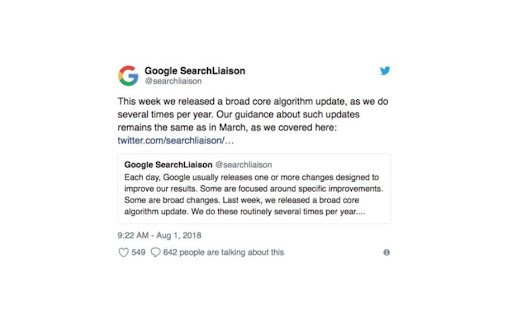
That left the larger community to analyze, assess, and understand what exactly happened with this core algorithm update. While not entirely focused on health and medical sites, they were impacted the most by this update:

With this update and other smaller non-announced updates that have occurred over time, we have seen more traditional reputable sites like the Mayo Clinic, the CDC, the Cleveland Clinic, and the FDA gain more organic visibility while others like MedicineNet and Psychology Today have fallen off.
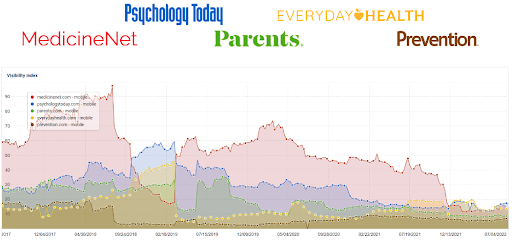
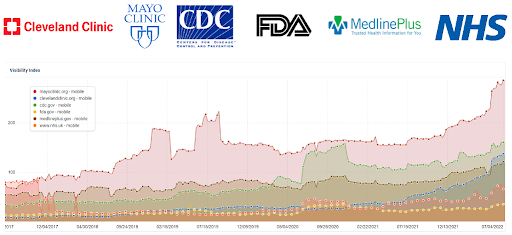
At the time, this was the single most significant algorithm update that had clear E-A-T indicators associated with it.
The Medic update certainly hasn’t been the only algorithm update to take E-A-T into consideration, but given that Google updates their algorithm thousands of times per year (over 4,500 changes in 2020 alone), there have undoubtedly been many smaller, non-announced updates with E-A-T as a focus. The Medic update stands out however because of its impact and the fact that it was a broad core algorithm update. Those broad core updates are only rolled out with announcements from Google 3-4 times per year, on average.
The Better Content Update
In August 2022, as this is being written, Google announced another algorithm update, but this time they named it: the Google Helpful Content Update. Quite intuitive and descriptive. Its primary focus is to reward and better rank content that is written by humans for humans rather than content that is written purely to rank better with only SEO performance in mind.
This update is one with sitewide impacts which means that the algorithm’s machine learning will look at the content across the entire site and try to determine if a relatively significant amount of the content is unhelpful or low-quality. If it is, that could lead to the entire site being flagged which could lead to a significant drop in rankings. According to Google, the signal is weighted so sites with only some unhelpful content will be less impacted than sites with mostly unhelpful content.
So how does E-A-T factor into this update?
Google put out an update support document titled “What creators should know about Google’s helpful content update” and it includes 6 questions that creators should ask themselves about their content:
- Do you have an existing or intended audience for your business or site that would find the content useful if they came directly to you?
- Does your content clearly demonstrate first-hand expertise and a depth of knowledge (for example, expertise that comes from having actually used a product or service, or visiting a place)?
- Does your site have a primary purpose or focus?
- After reading your content, will someone leave feeling they’ve learned enough about a topic to help achieve their goal?
- Will someone reading your content leave feeling like they’ve had a satisfying experience?
- Are you keeping in mind our guidance for core updates and for product reviews?
Looking at the second bullet, we can see that both Expertise and Authoritativeness are indirectly referenced. Conversely, within the same document, Google includes a section about avoiding creating content for search engines first and asks, “Did you decide to enter some niche topic area without any real expertise, but instead mainly because you thought you’d get search traffic?”
With this update, it’s clear that Expertise matters. We will certainly see sites that have been focusing on optimizing for where Google was start to fall behind where Google will be.
How to Improve Your E-A-T in SEO
Now that it’s well-established E-A-T will be an increasingly more significant aspect of Google’s algorithm, it’s important to understand what that means for your site and how you can best future-proof it.
Some key ways to improve your E-A-T include:
1. Make sure your content has an expert that it can be attributed to.
No surprise here, but if the content you’re developing for your site is either written or reviewed by an expert in the category, industry, or niche, Google will view it as higher quality.
2. Include their bio in detail on every page that the expert writes or reviews
By including a bio on the page, rather than solely on an About Us page, Google will more directly be able to attribute that expert with their qualifications and credentials.
3. Build out that expert’s SEO presence
Because Google will look outside of your site to try to get an idea of how reputable an expert is, it’s important to create more external signals that Google can pick up on. This could come in the form of the expert guest posting on other sites or even creating their own website where they can speak about themselves and aggregate their credentials.
4. Create and provide unique, original research
Google values content that adds to the conversation. Simply re-writing what is currently ranking often won’t be enough to rank on the first page. By creating new and unique research, you can give Google a reason to elevate your page above the sites that are currently ranking.
5. Secure high-quality mentions and links from reputable, related sources and sites
One aspect of authoritativeness is how often other reputable sites reference, mention, and/or link to your site. By connecting with sites in your category, industry, or niche and giving them a worthwhile reason to link to your site, you can help build up the external authority of your site and your experts.
6. Gain positive reviews across any and all trustworthy review sites
Reviews that have positive sentiments across major review platforms can often be worthwhile signals to Google that an entity is both an authority and trustworthy.
7. Be trustworthy
Don’t lie. Cite your facts. In an age where disinformation is popular, Google’s algorithm is constantly on the hunt for information as accurate as possible. By providing trustworthy content that is either cited or well-researched, you will be providing Google with clean trustworthiness signals.
8. Try to avoid content that is overly promotional
While this may not always be possible, content that is first and foremost informative will demonstrate to Google that you are trying to create useful content that will leave the user satisfied. This is core to their most recent Helpful Content Update so it should be a goal to provide users with the information they are searching for first before engaging in promotional tactics.
9. Keep content fresh and up to date
Things are always changing so by evaluating older content and keeping it up to date with new facts, figures, and information will help demonstrate all three E-A-T principles.
10. Audit your existing content
With the constant algorithm changes, older content that may have been performing well in the past could be seen as having lower E-A-T signals over time. With the Helpful Content Update, it’s important to make sure that all content on the site is helpful as having some less helpful content can impact the entire site.
11. Build out lengthy About Us pages
While bios on all content pages is important, creating lengthy About Us pages gives Google yet another place to understand the credentials and levels of expertise of the writers and reviewers. These pages provide an opportunity to go further in-depth than on-page bios typically would.
12. Link to high-quality sources within content
By adding both internal and external links to content, especially links to high-quality external sites, you can demonstrate to Google that the information you are providing is factual, accurate, and useful.
13. Utilize author schema markup
Schema markup is a way to efficiently provide Google with key details regarding a webpage within the code. Author specific schema is available and should be taken advantage of for this reason.
As long as people need information, organic search will always be around. Be sure to stay ahead of the SEO curve by following E-A-T best practices and ensure that your website will not only avoid negative impacts of future algorithm updates, but potentially benefit from them.
About Ryan
Ryan Jacobsen is the Director of SEO at LaneTerralever, a full-service marketing agency based in Phoenix, Arizona. With six years of SEO experience, Ryan has worked with clients such as The American Heart Association, The North Face, Brooks Brothers, Vineyard Vines, The Standard Hotels, and Cavender’s among many others. He pursues holistic SEO strategies that aim to grow websites according to industry best practices while researching and testing new initiatives to ensure clients stay in front of the curve.
The post The Importance of E-A-T in SEO appeared first on Convince & Convert.

